Inside Formula 1: Timing Is Everything
Formula 1 and Rolex are two of the most recognizable brands in the world. In 2013, the two companies entered into a long-term Global Partnership, with the watchmaker becoming the official timepiece of Formula 1. Precision timekeeping is just as important on the race-track as it is on the wrist, after all. That's why, when Rolex offered us a behind-the-scenes look at the incredible spectacle that is a Formula 1 weekend, we didn't waste a second in saying yes.
The connection between Rolex and Formula 1 was actually established 50 years ago, when Rolex partnered with three-time Formula 1 Champion Sir Jackie Stewart. A legend both on and off the track, not to mention a vocal motorsport safety advocate, Stewart started racing in 1965 with Ferrari and then went on to win 27 of the 99 Formula 1 races that he competed in. He's still active as a Rolex Testimonee, too, with both the brand and the sport. 2018 would also mark the sixth year of Rolex being a Global Partner and Official Timepiece of Formula 1.
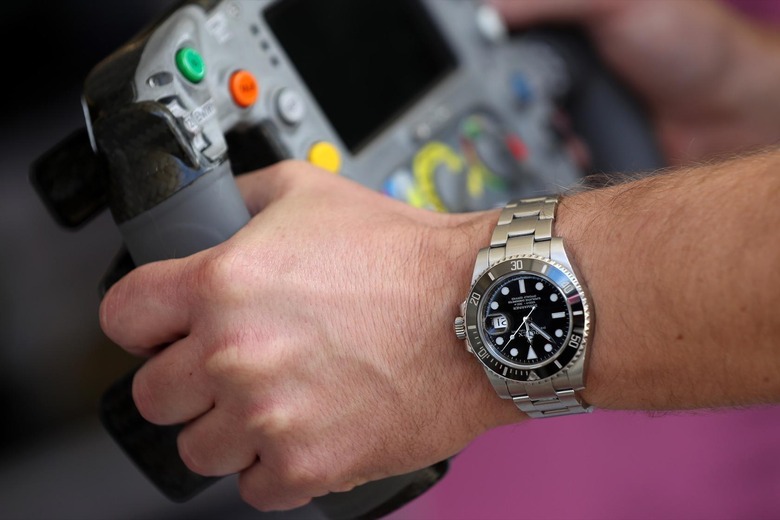
For many motorsports fans, Sunday is an important day, and it has been for a long time. "Win on Sunday, sell on Monday" is an old saying that dates back to the 1950s, but even today every Formula 1 race on the calendar takes place on a Sunday. What leads up to the start lights turning off and the cars launching into the first turn is careful choreography. To understand that, you need to get there early.
Friday was my first day at the Circuit of the Americas, but even two days in advance I was joining a project already well-underway. The teams and all of the F1 personnel had already been on site for many days already. Indeed, as soon as the checkered flag dropped in Suzuka, Japan, the teams had immediately started packing up all of the equipment, shipping it off to cross the Pacific Ocean in order to reach Austin, Texas in time. Teams and organizers often have double or even triple sets of equipment, pre-staged around the globe to help cut down on costs and make the most of their time. Almost all of the buildings, garages, and personnel I saw at the track would only be here for a few days. Ships transport the heaviest items, and a fleet of 747 transport planes move the rest.
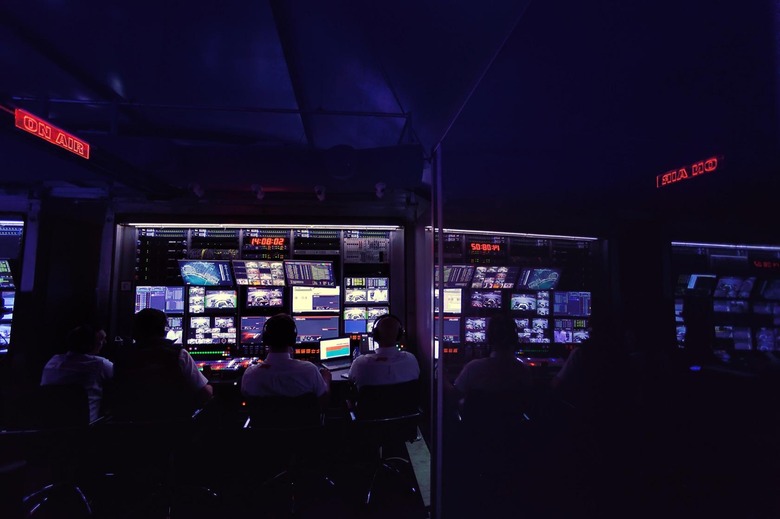
Our first look behind the curtain would be a tour of the International Broadcast Center. It's the central collection point for all data generated during an event: everything from timing and car speeds, through to audio, video, driver inputs, and many other details.
The Broadcast Center houses most of the technical systems used by Formula 1. The International TV feed is produced within the broadcast center, all of the data feeds that are displayed to those of us at home, and even the data feeds that the teams use are collected and distributed here. The timing and scoring, in-car footage, pit speed monitoring, the start lights, and even the turnstiles we used to access the paddock and other parts of the track are controlled by this team. At the helm is Andrew James, Technical Director at Formula 1. After more than two decades at the sport, he's had a front-row seat to its evolution.
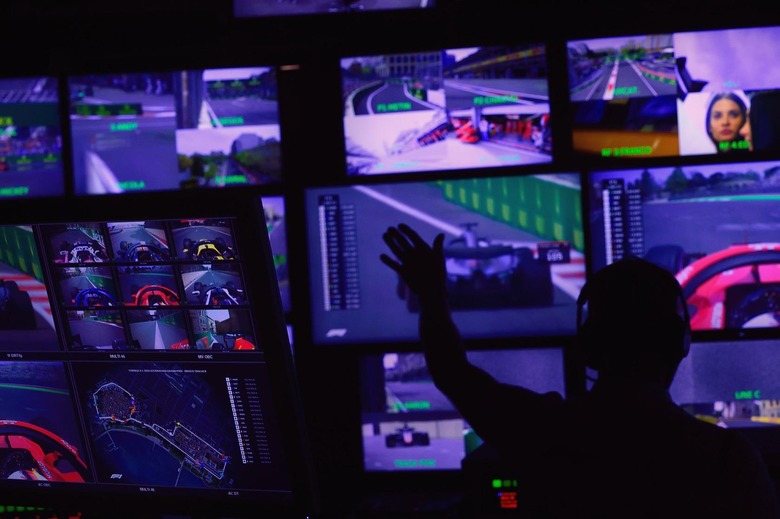
As we walked through the front door, the frenzy of people moving about was incredible to watch, even if there was no activity on the track quite yet. You might think of a broadcast center as a big control panel and a vast bank of screens, but it's just as much a workshop as that. Indeed, the first room that we saw was the camera room and technical equipment repair room. With dozens cameras and over 120 microphones placed around the track, the Formula 1 crew makes sure it has all the soldering irons and any other tools necessary to keep them 100-percent functional.
Through the next set of sliding doors was the control room. As someone who has spent most of their career working in IT, I was blown away by what was on display in front of me. The engineers have built all of the necessary equipment into several shipping containers: only the walls need to be removed to expose all of the equipment inside. It's a smorgasbord of tech, too: fiber switches, computer chassis, storage arrays, audio mixing stations, TV production equipment, lots of screens, camera controllers, and miles of fiber optic cabling linking them together. The engineers spared no expense with this infrastructure, and you need more than a couple of extension cords to power it, too. Making sure everything runs as smoothly as the cars on the track are generators with a thirst for around 16,000 liters of diesel. Happily six high-capacity air conditioners are on-hand to keep the whole center cool.
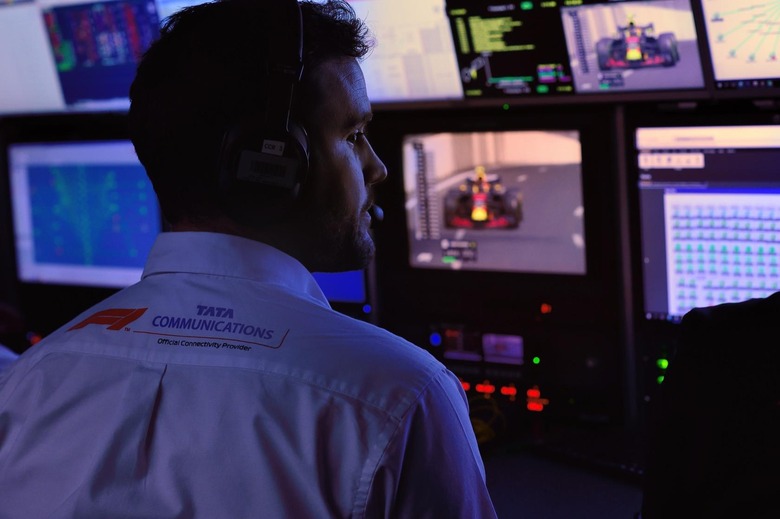
Tata Communications plays a huge role in everything that happens here. Their global data networks keep the information flowing. They even provide a gigabyte link to London, where the Formula 1 social media and editorial teams sit and operate during the race weekend.
Fifteen years ago Formula 1 took over the entire flow of information and the production of the World Feed. Before that, it was up to each broadcast partner to produce a show for each region: problem was, each region would tend to focus on a particular local team or driver, and in the process a lot of the action would be lost. So, Formula 1 took over and started producing a show for a global audience. The World Feed begins 5 minutes before the race and concludes after the podium ceremony. The goal of the producers is to have the footage from the track to your TV in under 400 milliseconds.
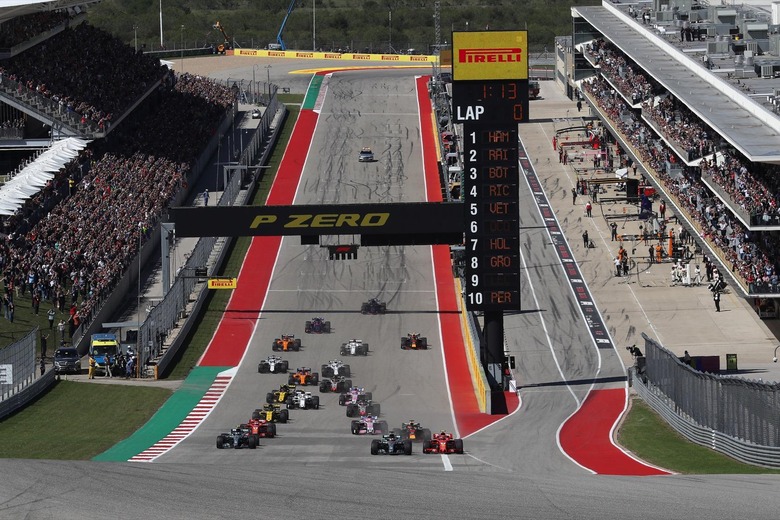
It's not just entertainment, mind. One of the most critical roles housed within the International Broadcast Center are the timing and scoring systems. With just as much team kudos as money resting on it, there's not just duplicate hardware for timing but four redundant timing systems and two results operators. They're responsible for helping maintain order and invalidating laps when necessary, if corners are being cut. They sign off on the final race results as well.
Their eyes and ears around the track is the Circuit Communications Ring (CCR). It's made up of hundreds of miles of 24 core fiber, 20 nodes, and 470 items of equipment. Thirty telemetry receivers, 120 microphones, dozens of cameras, receivers for team and driver communications, and various signs and safety systems around the track all tap into the CCR, a spider's web of Formula 1 data. Surprisingly, James explains, none of this infrastructure is left behind: the team packs it up after each race and takes it to the next. It would take just as long to evaluate all the cables had they been left behind as it would to deploy them anew.
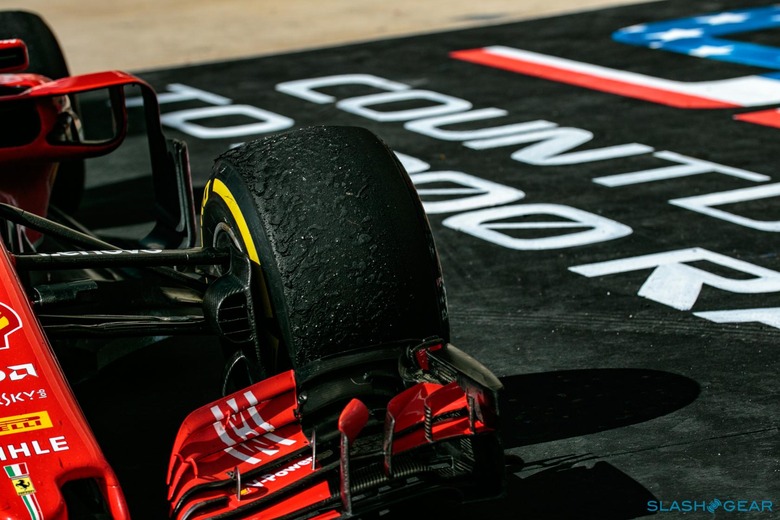
It's a huge undertaking, but an unexpectedly small team. In total there are seventy staff members involved with producing one race. Two directors and two producers sit in the hot seats, as well as a tire provider which tells the team what set of tires the cars are leaving on. Each camera operator is assigned five cameras, and it's their job to adjust all aspects of the image to make sure it meets one broadcast standard. They are continually checking the color balance and exposure to make sure the teams and sponsors color schemes are represented as accurately as possible on television.
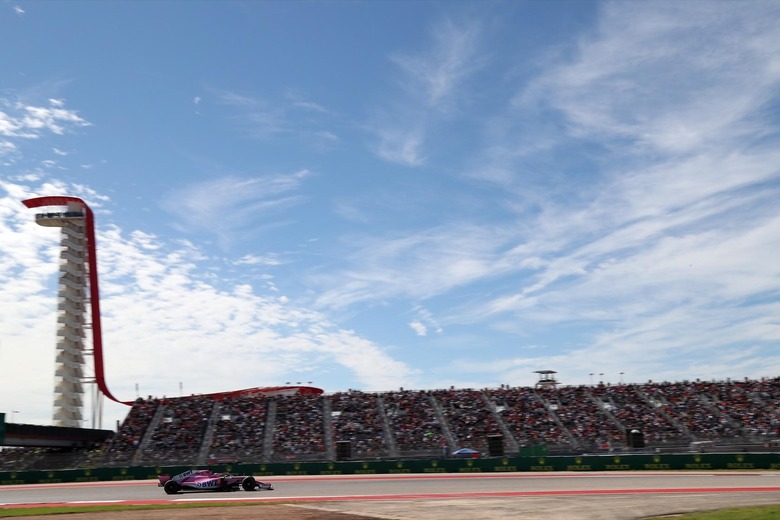
The amount of thought that goes into all aspects of the is astonishing. There are even four cameras placed around the track for electronic signage. They are able to put a sponsor's logo on any of the surfaces.
All of the data collected from the cameras – such as the throttle position, brake input, wheel speed, and sector times – are collected and overlaid on the video for the viewers at home to see. It's the job of the Main Director to combine all of this information to tell the story of the race. There's even a specials producer, who controls the video feeds from the helicopters and podium celebration. The directors are in communication with all the camera operators and instruct them what to capture.
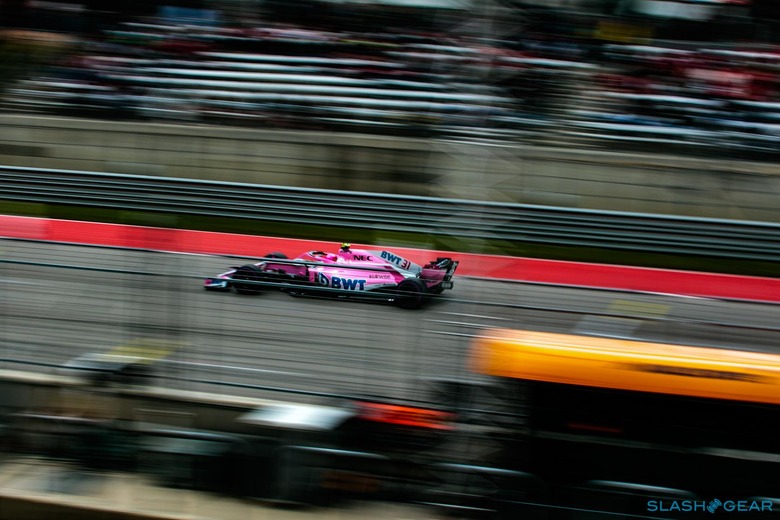
It's a high-intensity job, but there's no respite when the cars return to the pits for the last time. Next up on the schedule was a race in Mexico, and according to James the goal was to have everything set up and working the Thursday before the weekend. That meant getting up at 2:00 AM on Sunday, to start moving equipment to the airport and have everything in Mexico by Monday night. The TV equipment alone would take up the cargo capacity of one and a half Boeing 747 transport aircraft.
Part of the challenge is dealing with the unexpected, and that can be different at every track. With Austin hammered by torrential storms, for example, FIA Race Director Charlie Whiting had to take a raincheck on taking us through his role as the de-facto sheriff of Formula 1. Instead, we caught up with Bernd Mayländer.
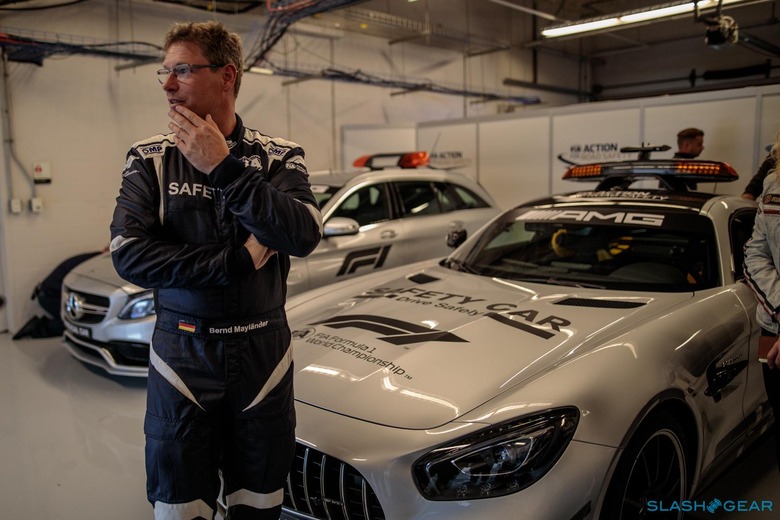
Since 2000, Bernd Mayländer has driven the Formula 1 safety car. The United States Grand Prix will be his 244th race, though Mayländer has also led over 700 laps in Formula One. He's got some alluring hardware to do it in, too: a 585 horsepower Mercedes AMG GT R is his current vehicle. With a top speed of 201 mph, the AMG GT R is the perfect vehicle for helping maintain order on the track.
You might think the safety car is just about setting a starting pace, but it's much more complicated than that. One of Mayländer's biggest challenges is making sure airflow to the Formula 1 cars is maintained: each of the race cars has numerous radiators, each working overtime to keep all of the critical systems cool. Get the flow of air across those wrong, and suddenly you can find your brakes bursting into flames.
Each track requires different speeds to make sure that doesn't happen, Mayländer explained. The fastest he has to drive, for instance, is around 177 mph on the Baku Circuit in Azerbaijan. For the Circuit of the Americas, he said, his average speed would be around 155 mph. Still, the Formula 1 cars are still capable of moving 7-9 seconds faster per kilometer than even his AMG GT R.
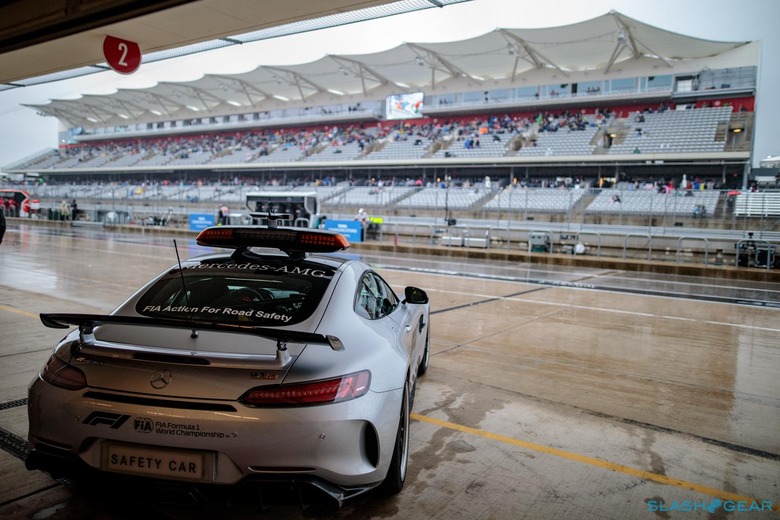
This is no stock Mercedes-AMG, mind. Mayländer's car is also fitted with the same timing and scoring equipment as the F1 cars. Each track consists of 30-35 timing loops that report to the timing system directly. As the safety car passes through those loops, they can verify that everything is working as expected.
Unlike the F1 cars, AMG GT R is wearing off the shelf Pirelli road tires: there simply isn't time through the race to swap the rubber if the conditions change. It's Mayländer job to drive the track before each session – and sometimes in-between – to get a feeling for the track conditions. That's fed back directly to race control through his co-driver technician from the FIA, and then Race Control makes the decision whether to let the Formula 1 cars out onto the track or not.
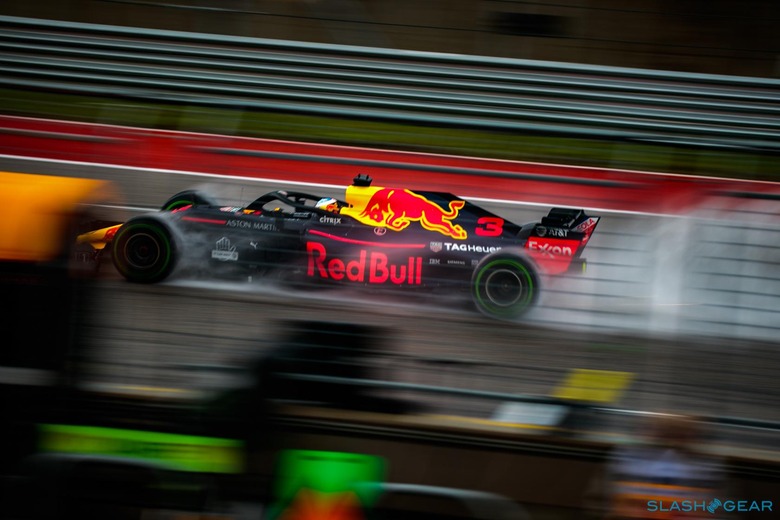
There's a lot riding on that decision, too. With the torrential downpours and all the standing water, the track surface is not only very bumpy but potentially prone to hydroplaning. Since this would be a free practice session it was up to the individual teams if they would participate: in the end, all of the teams would go on to skip most of the session. This became a fascinating point of discussion, as it would eliminate a full set of vital data points for the team to work with – indeed, it's possible that the lack of data would go on to help make the race as entertaining as it turned out to be.
Eventually the rain let up enough for some of the cars to attempt the second practice session. Just how useful the data collected hinges on how close the weather conditions are during your practice to how race day turns out. The Rolex suite overlooking the start line provided an incredible view of the cars flying down the front straight and up the hill. Watching the gallons of water the Formula 1 cars' tires and aero are able to displace is pretty amazing.
Saturday
Saturday would be the first day the drivers were on track without any rain, and during the third practice session we saw the lap times shortening with each loop. Unlike the day before with our bird's eye view of the start line, we moved down to where the action was taking place at the back of the Force India garage.
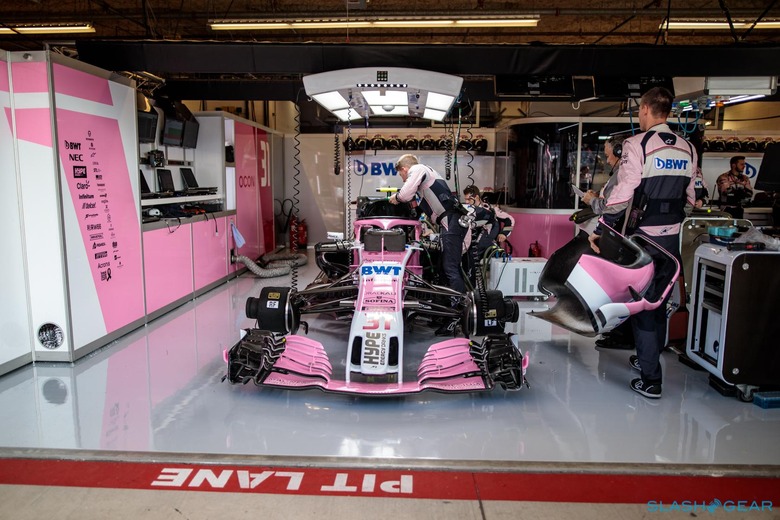
It's a mesmerizing display of theory and experimentation working hand in hand. With each stop, the mechanics would rush to the car and make minor tweaks based on the data collected and feedback from the driver. Every adjustment seemed to be done with the smallest twist of the key. You have to be careful, too: the changes could even slow the car down if miscalculated. The simulations they run aren't able to tell the whole story.
The cars may be expensive, but data is priceless when it comes to a Formula 1 race. With seconds potentially the deciding factor between 1st and 10th place, you need every advantage that you can find. Data helps the hoards of engineers and technicians make small changes to the cars, and by the time Sunday rolls around the race has already been run hundreds – if not thousands – of times already, inside of simulators.
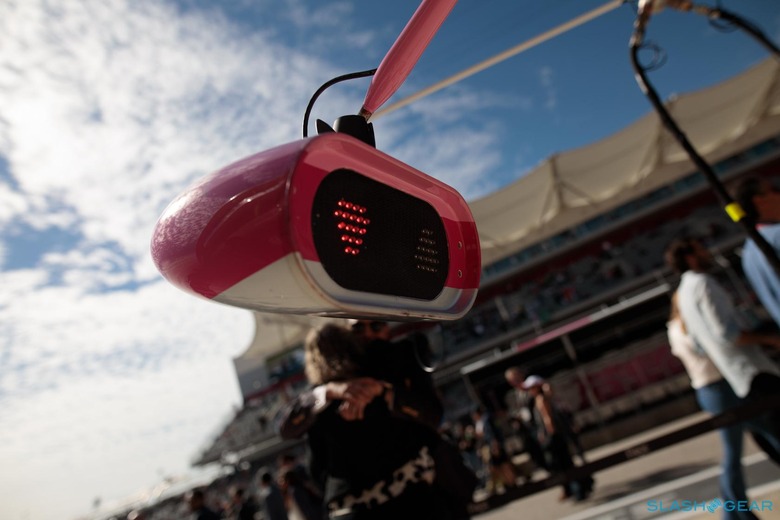
All that theory is put for the test in one of the most exciting parts of any Formula 1 weekend: qualifying. This is the time when the drivers need to give it their all, and try to get as close to the front of the pack as possible. The latest iteration of the Formula 1 cars produces a wake of filthy air that makes passing close to impossible. So, the fewer cars that you need to pass, the less fuel will be burned, and the wear on the tires will be reduced. The opening lap is often when some of the biggest crashes happen, so it's essential to have as few cars around you can. Any small mistake could end the race for a handful of drivers very quickly.
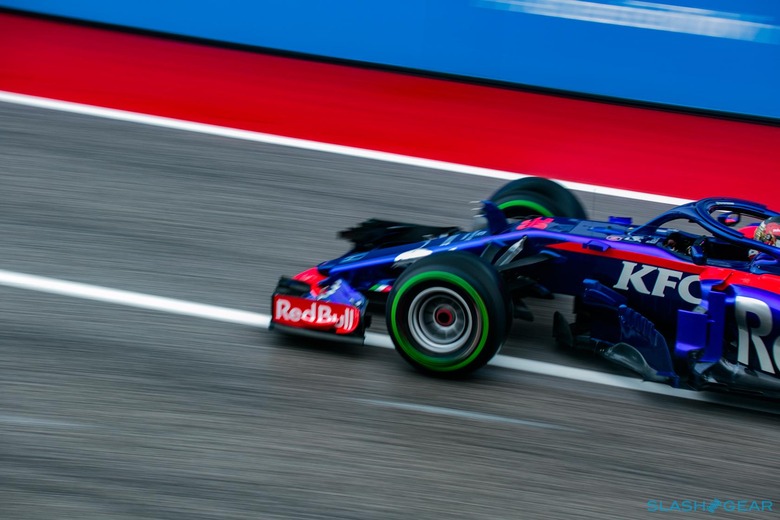
There are three stages to qualifying: Q1, Q2, and Q3. In Q1 the drivers have 18 minutes to set the fastest time possible. The back six cars are eliminated once the clock runs out, and they will start in the final six places. The clock is reset to 15 minutes, and this time the slowest six cars are eliminated and move to spots 11 through 16.
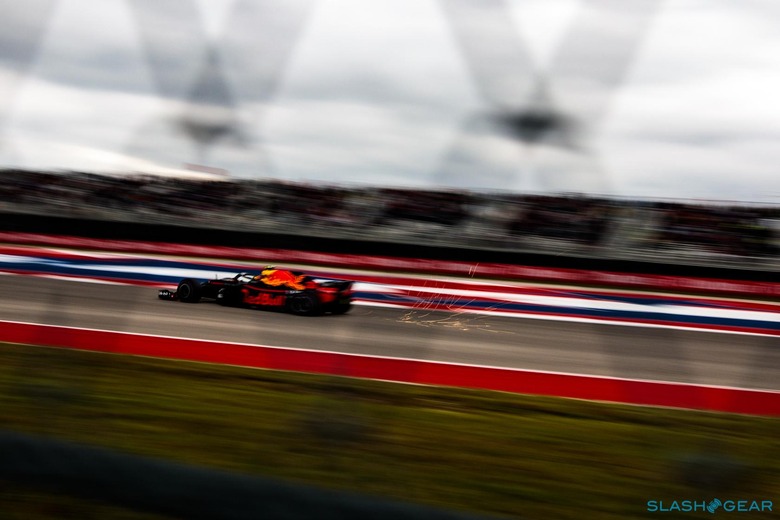
Finally, in Q3, the clock is set to 12 minutes and the remaining cars compete for the first grid spot – or pole position – for the race, as well as the remaining spots on the grid.

As expected, Mercedes and Lewis Hamilton would take the pole, and he would be followed by the Ferrari duo of Sebastian Vettel and Kimi Raikkonen. All three took the stage in the media center for the drivers' press conference, and it was a fairly surreal experience to be watching them from inside the room instead of from my usual spot on the couch. All three then get rushed outside to the corral, for one-on-one interviews with all of the international news agencies.
Race day
Sunday finally arrives, and an early start to head to the track. Formula 1 races draw significant crowds, and even at this early hour there were plenty of fans waiting to get into the circuit.
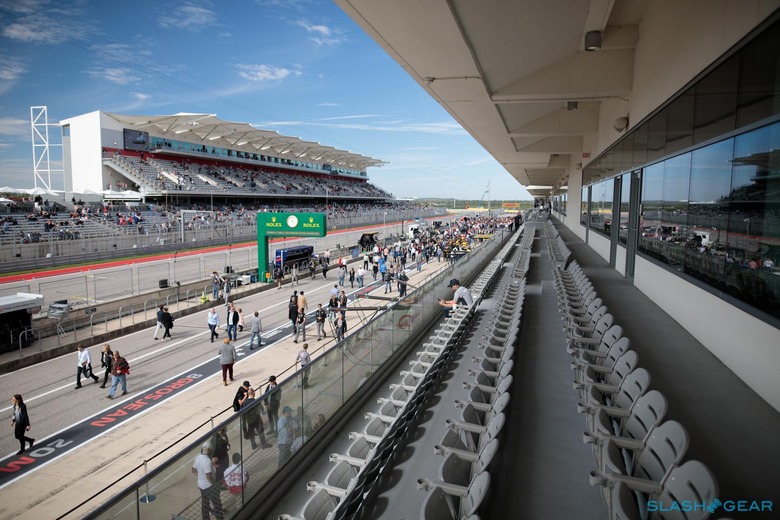
The Sunday atmosphere is very different compared to the other two days. The excitement has definitely built up, and there are fans represented from all over the world. It's impressive to see how a sport like Formula 1 can unite so many people.
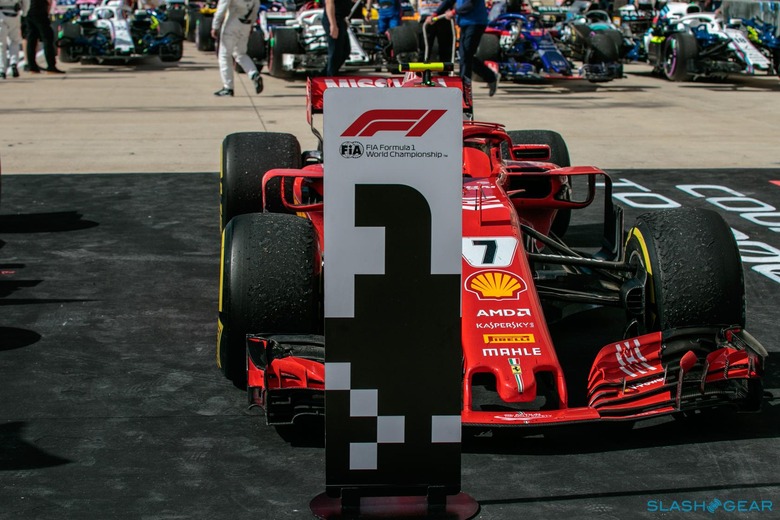
In the garages, the focus is on getting the cars prepared; we paid another visit to the Force India pit, to watch as the mechanics worked their magic. Each has a particular focus, as one took a few minutes to explain to me. She was responsible for the very elaborate front wing setup, and based on the data gathered the engineers would ask her to swap around different wings and other small aero shapes, to help optimize the downforce. Nearly every part of the car has a technician assigned to it, she pointed out, though they're all capable of switching spots if absolutely necessary. It's a high-intensity job, and the level of discipline is very high.
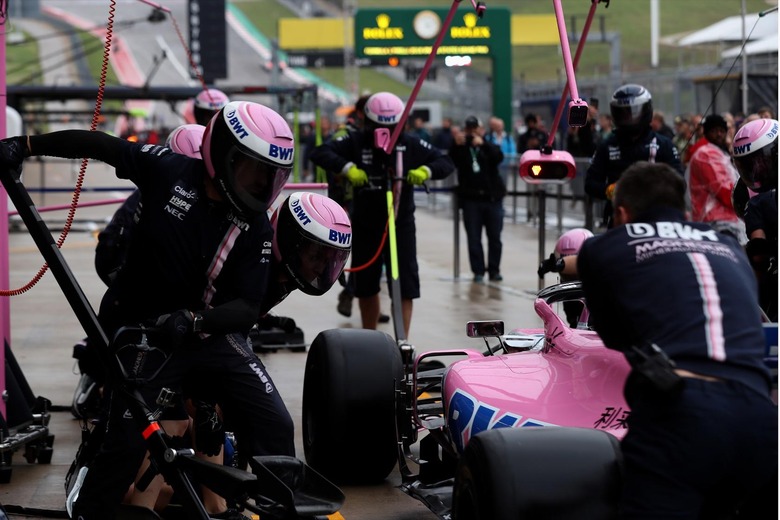
Outside, in the typical fashion, the United States flag is delivered via skydivers, there's a flyover of US Army Apache and Chinook helicopters, and finally The Star Spangled Banner helps kick off the race. The starting grid is filled with cars, mechanics, engineers, and of course the drivers, all making sure that the cars are as perfect as possible. Even this close, there are plenty of small changes being made, and tire choices are being verified. The safety car rockets away from the front of the grid and cars take off for one reconnaissance lap.
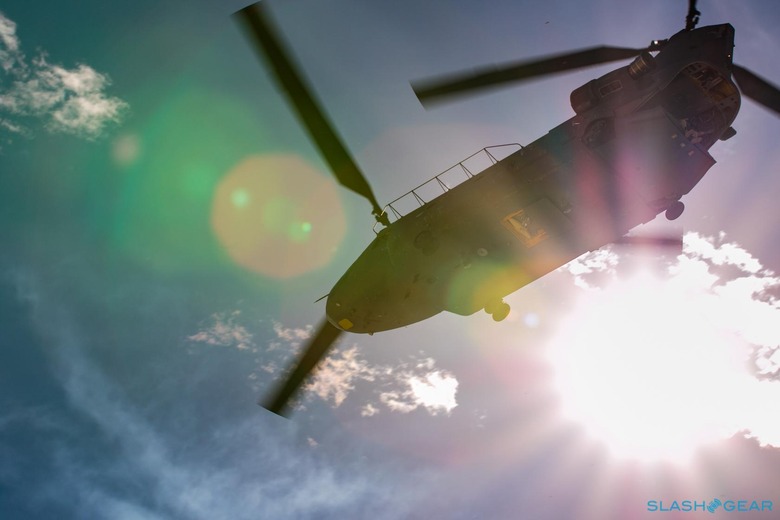
The sound is deafening, as all the cars sit at the start line. The red lights fill the start signal hoist above the track, and the drivers engage launch control and start building boost. As soon as the last light turns off, all the cars surge away as quickly as possible, climbing several stories to the top of the turn 1 hill. Within seconds, they're all out of sight.
It takes about 2 seconds for a modern Formula 1 car to hit 60 mph. The fastest lap of the nearly 3.5 mile Circuit of the Americas would take a scant 1:37.392, set on lap 40 by Lewis Hamilton. The pole-setting lap during qualifying was a full 5-seconds faster, at 1:32.237. However, it would be only 4 corners until Lance Stroll would crash into Fernando Alonso, ending the race for the both of them. Whether it was the data-twisting wet practice sessions or some other reason, the rest of the race would turn out to be one of the most exciting in a long time.
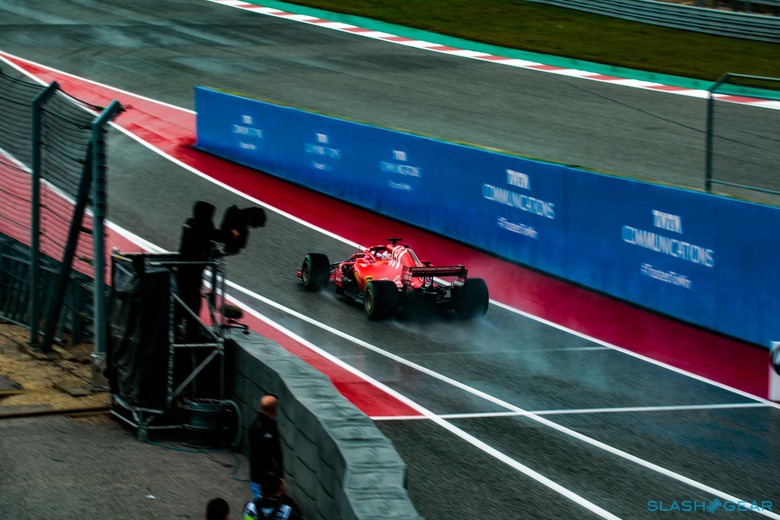
For Lewis Hamilton, it was the possibility of becoming the World Champion for the 5th time, with three races still left in the season. Kimi Räikkönen of Ferrari and Max Verstappen of Red Bull Racing had other plans. Their 1st and 2nd place finish would keep Lewis in 3rd, and along with Sebastian Vettel in 4th would delay Lewis' title one more weekend.
Before the checkered flag could fall, Rolex rushed us out to the end of the pit lane to Parc fermé where the winning drivers would soon arrive, and would be celebrating on the podium high above. With a Ferrari driver on the top step, every one of the Ferrari crew rushed to the stage to help celebrate. The Finish and Italian national anthems would soon start, and the confetti would fly, and there would be a lot of singing and champagne spraying.
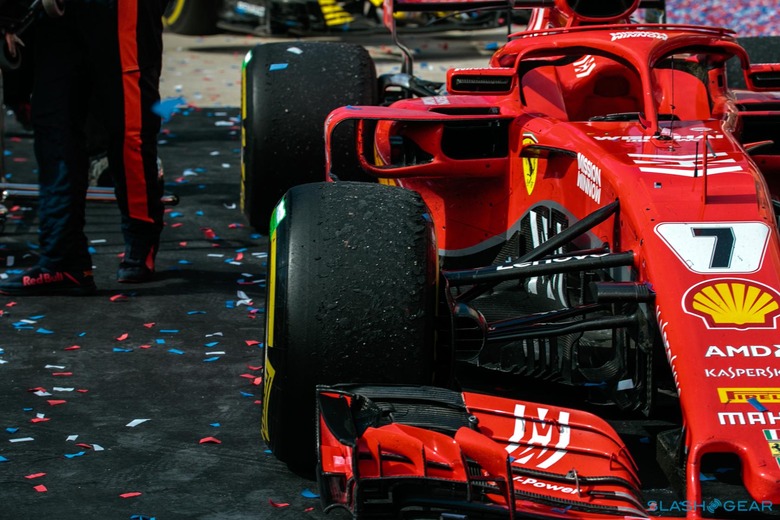
Not everybody gets to partake, mind. Even before the last piece of confetti hit the ground, the teams had already started disassembling their garages and getting everything packed up. They would start moving the equipment by 2 AM Monday morning, with the final batch of equipment leaving by Monday night. All so that they could prepare for the upcoming Mexico Grand Prix the following weekend.
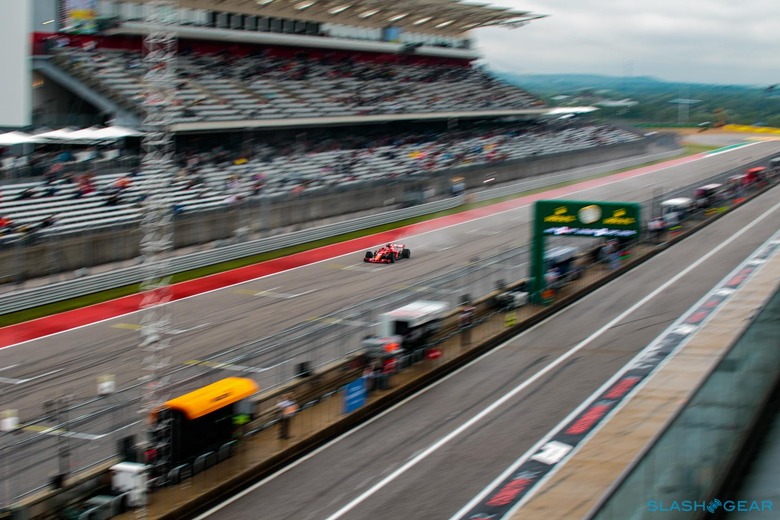
Formula 1 is an remarkably complex machine, that travels around the globe spawning 21 races in 21 countries and touches nearly every continent. It was incredible to get behind the scenes to see what goes into producing a successful weekend, and the degree of precision involved with every second of the day planned.
There's minimal downtime for the people involved, and yet they're all dedicated to their craft. Their love for the sport and what they do is also incredible to hear about: everyone I had the opportunity to speak with had so much passion for racing. These are the moments that are always overlooked during the television broadcast, but without which the spectacle simply wouldn't take place. Knowing what's involved, you can't help but appreciate Formula 1 all the more.
